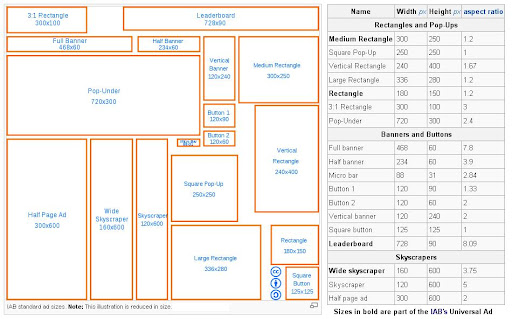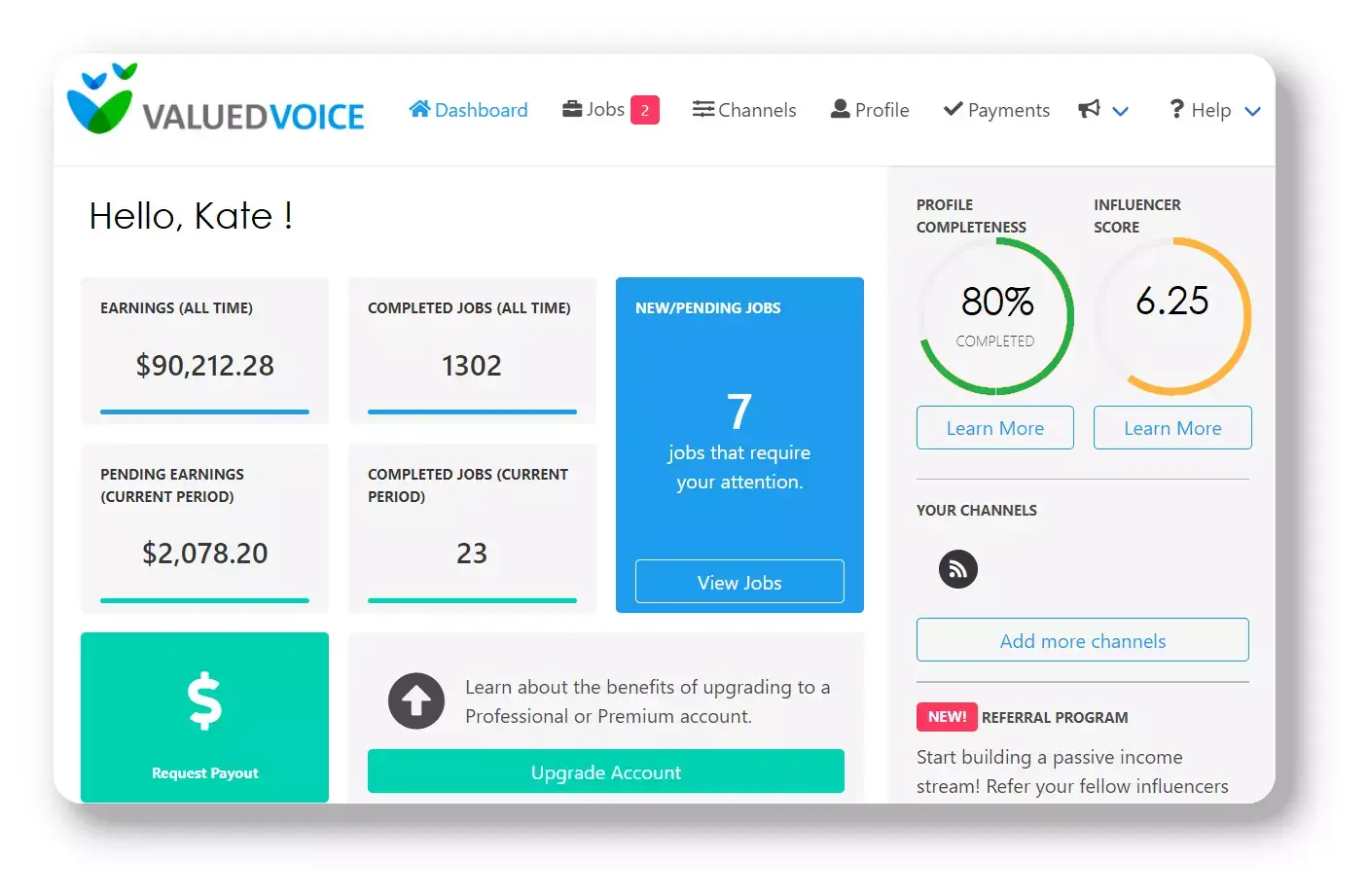How to Sell Advertising Space on a WordPress Website
Monetisation Strategies for Website Owners
Monetising a website through advertising is one of the most effective ways to generate revenue, especially if you have a steady stream of traffic. If your website is built on WordPress, you have several options for selling ad space, ranging from automated solutions to direct ad sales.
This article explores the best options available and provides step-by-step instructions for getting started with each method:
The Marketing Made Clear Podcast
This article features content from the Marketing Made Clear podcast. You can listen along to this episode on Spotify:
How Much Traffic Do You Need to Sell Ad Space?
The amount of traffic needed to successfully sell advertising space depends on the monetisation method:
- Google AdSense: No strict minimum requirement, but at least 1,000+ monthly visitors is recommended to generate meaningful earnings.
- Direct Ad Sales: Businesses typically look for websites with at least 5,000 to 10,000 monthly visitors, but niche authority matters more than raw traffic numbers.
- Affiliate Marketing: No specific traffic requirement, but engaged audiences with strong conversion potentialyield better results.
- Ad Networks: Minimum traffic requirements vary:
- Ezoic: 10,000+ monthly visitors.
- Mediavine: 50,000+ monthly sessions.
- AdThrive: 100,000+ monthly views.
- Sponsored Content: Typically requires at least 5,000-10,000 monthly visitors, but strong domain authority and audience engagement can compensate for lower traffic.
1. Google AdSense
Google AdSense is one of the most popular and beginner-friendly ways to sell advertising space on a WordPress website. It allows Google to place relevant ads on your site and pays you based on impressions or clicks.
How to Get Started with Google AdSense:
-
Sign up for a Google AdSense account at adsense.google.com.
-
Add your website details and wait for approval.
-
Once approved, log into your AdSense account and generate an ad code.
-
Install a WordPress plugin such as Ad Inserter or Site Kit by Google to manage ads.
-
Place the generated ad code into your site using widgets or custom HTML.
Pros:
-
Easy to set up and maintain.
-
Works on autopilot.
-
No need to find advertisers yourself.
Cons:
-
Earnings depend on traffic and click-through rates.
-
Limited control over the ads displayed.
2. Selling Direct Ad Space
If your website has a niche audience, you can sell ad space directly to businesses looking to target your visitors. This method allows you to set your own rates and keep all the revenue.
How to Get Started with Direct Ad Sales:
-
Create an advertising page on your website, outlining ad space availability, pricing, and benefits.
-
Use an ad management plugin like Advanced Ads or WP AdCenter to place and track ads.
-
Promote your ad space via email outreach, LinkedIn, or existing partnerships.
-
Use PayPal, Stripe, or invoicing to handle payments from advertisers.
Pros:
-
Full control over pricing and placements.
-
Higher earning potential compared to AdSense.
Cons:
-
Requires effort to find and manage advertisers.
-
Potential for downtime if ad slots are not filled.

3. Affiliate Marketing
Affiliate marketing involves promoting products or services on your website in exchange for a commission on sales. Instead of traditional ad banners, you integrate affiliate links into content.
How to Get Started with Affiliate Marketing:
-
Sign up for affiliate programs such as Amazon Associates, ShareASale, Awin, or CJ Affiliate.
-
Choose relevant products or services to promote.
-
Use WordPress plugins like ThirstyAffiliates or Pretty Links to manage and cloak affiliate links.
-
Create content that naturally integrates affiliate links (e.g., product reviews, comparisons, or tutorials).
Pros:
-
No need to sell ad space.
-
Can generate passive income if traffic is consistent.
Cons:
-
Earnings depend on conversions rather than impressions.
-
Requires quality content to be effective.
4. Using an Ad Network (Alternative to Google AdSense)
If AdSense is not a good fit, consider other ad networks that offer better revenue opportunities or more customisation options.
Popular Alternatives:
-
Ezoic (for sites with 10,000+ monthly visitors)
-
Mediavine (for sites with 50,000+ monthly sessions)
-
Raptive (for high-traffic sites, 100,000+ monthly views)
How to Get Started with an Ad Network:
-
Choose a network that aligns with your traffic volume and niche.
-
Apply for approval and integrate their ad script into your site.
-
Optimise ad placements based on analytics and user experience.
Pros:
-
Potential for higher earnings than AdSense.
-
More control over ad quality and placements.
Cons:
-
Most networks have minimum traffic requirements.
-
Some require exclusivity, meaning you cannot use other ad platforms simultaneously.
5. Sponsored Content and Advertorials
Instead of selling display ad space, you can offer businesses the opportunity to publish sponsored blog posts or product reviews on your site.
How to Get Started with Sponsored Content:
-
Create a Media Kit outlining your audience demographics, website traffic, and pricing.
-
Reach out to brands that align with your audience or sign up for platforms like ValuedVoice, or IZEA.
-
Ensure sponsored content is disclosed in line with advertising guidelines (e.g., marking posts as ‘Sponsored’).
Pros:
-
Higher one-time payments than display ads.
-
Content remains valuable over time, improving SEO.
Cons:
-
Needs to be well-integrated to maintain site credibility.
-
Can be time-consuming to negotiate and create content.

6. Selling Memberships or Premium Content
If your site provides high-value content, you can sell memberships that offer an ad-free experience or exclusive content.
How to Get Started with Memberships:
-
Use a WordPress membership plugin like MemberPress or Restrict Content Pro.
-
Create valuable gated content (e.g., in-depth guides, reports, or courses).
-
Set up payment options using WooCommerce or Stripe.
-
Promote your membership offering through email marketing and social media.
Pros:
-
Diversifies income beyond advertising.
-
Builds a loyal community.
Cons:
-
Requires ongoing content creation and engagement.
-
Takes time to grow a paying audience.
Conclusion
Selling advertising space on a WordPress website can be a profitable revenue stream if approached strategically. Google AdSense is a good starting point for beginners, while direct ad sales and affiliate marketing offer more control and higher earnings. For those with substantial traffic, premium ad networks and sponsored content can be lucrative.
Whichever method you choose, ensure your advertising strategy aligns with your audience’s experience to maintain credibility and long-term growth.
Ready to start monetising your website? Test out one or more of these options and track your results to see what works best!


